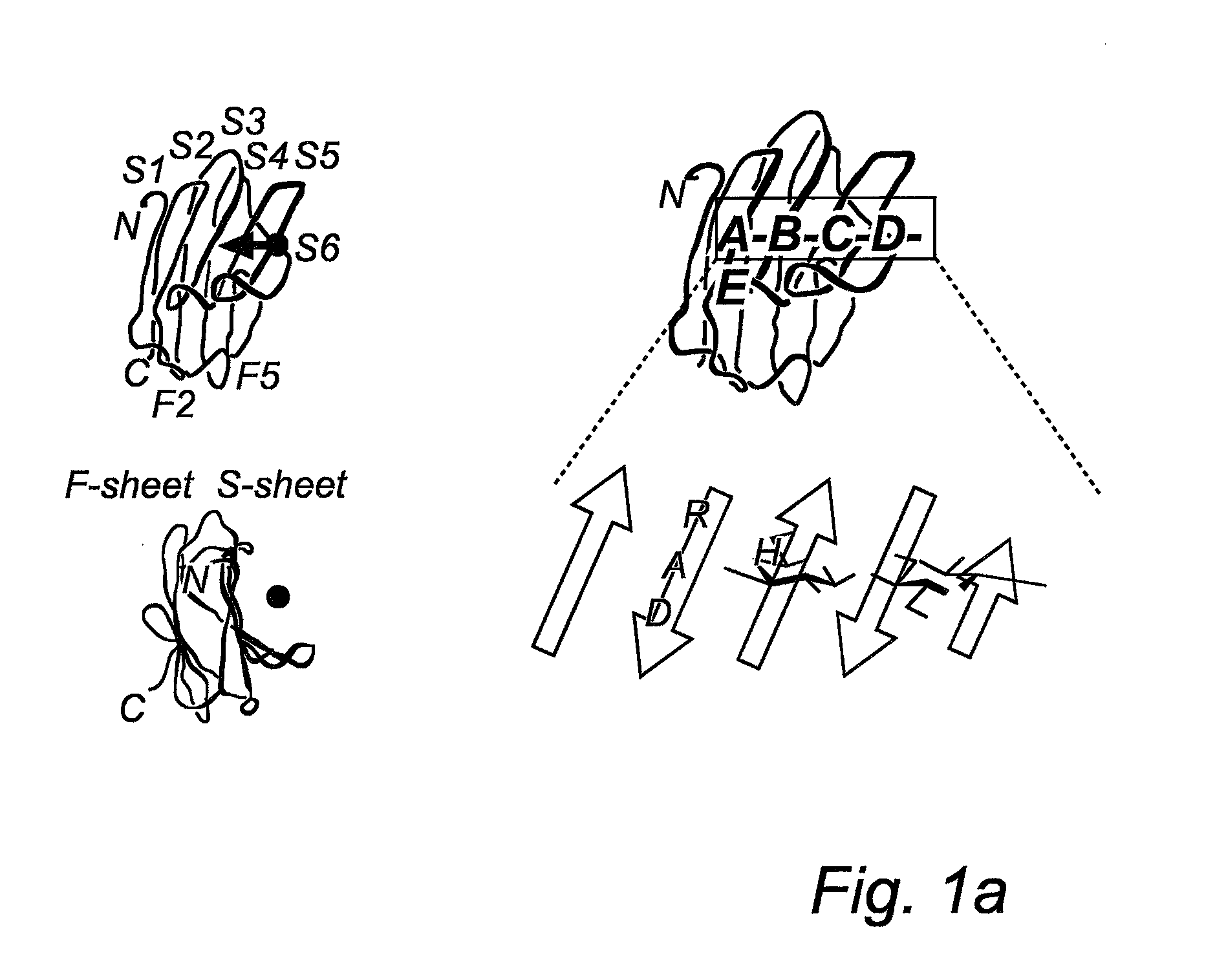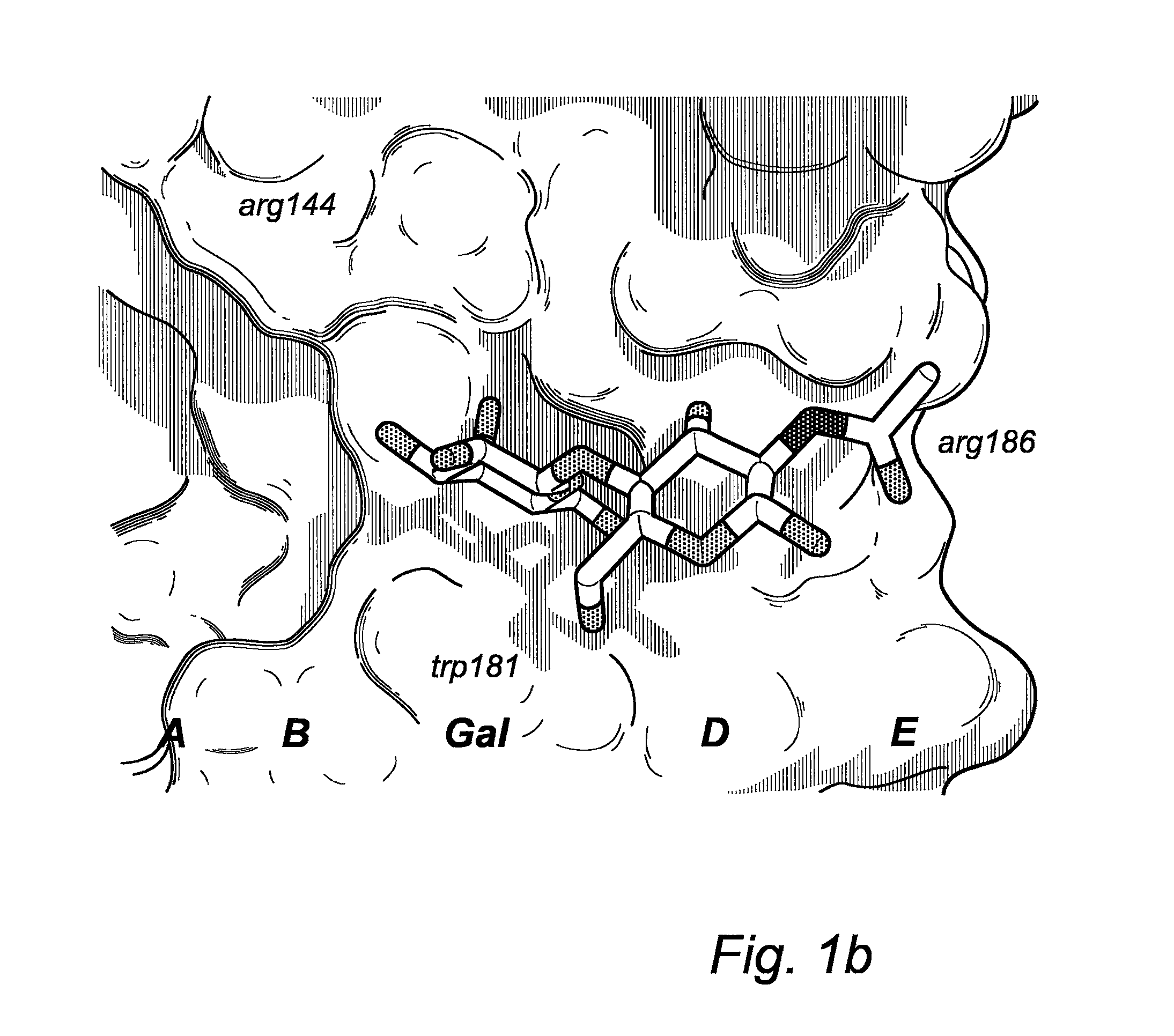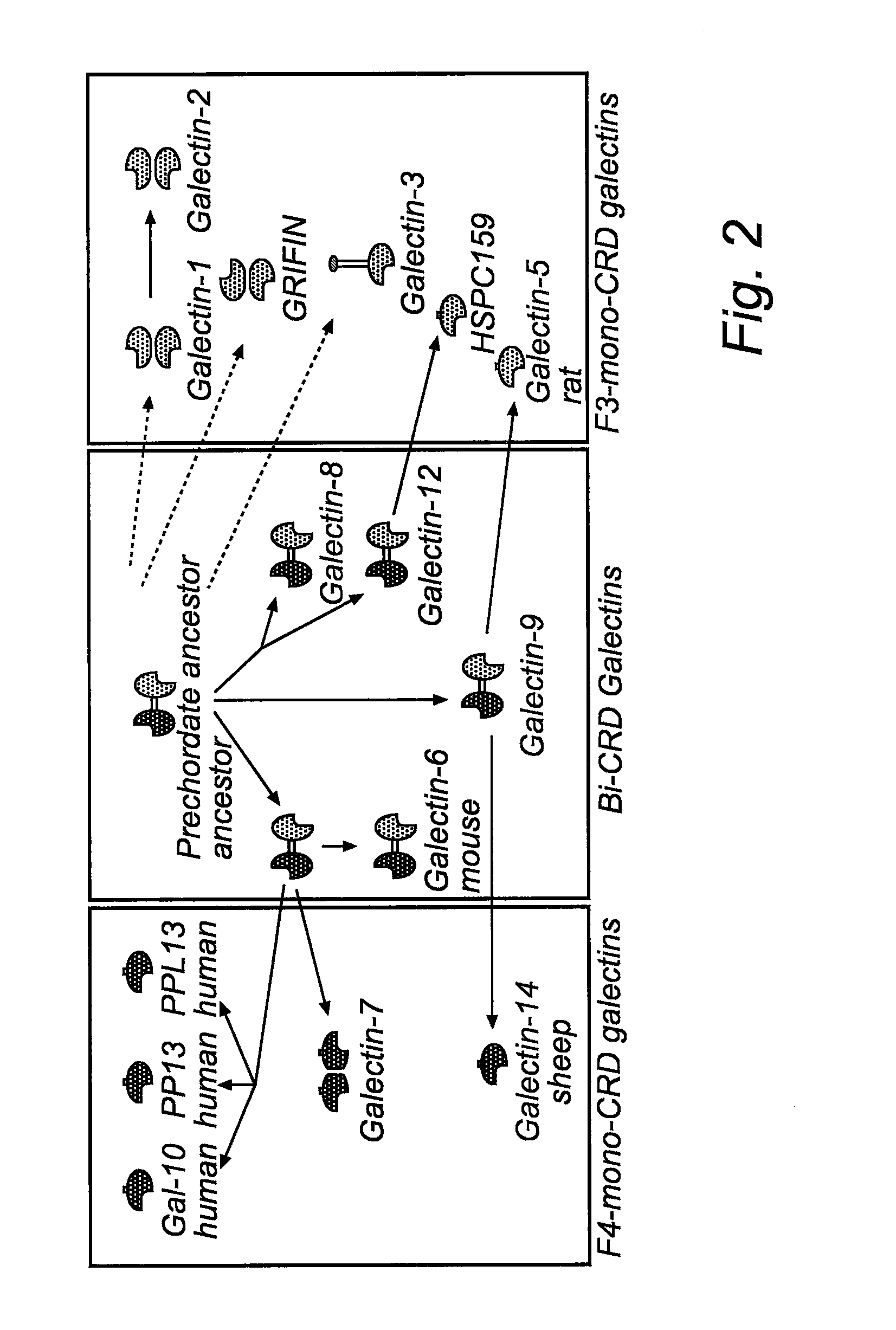Novel galactoside inhibitors of galectins
a technology of galactoside inhibitors and galectins, which is applied in the field of new compounds, can solve the problems of lack of specificity or lack of scientific focus, inducing tissue damage response in the wrong place and time, and premature priming in the blood stream, and achieves poor absorption, and high affinity for galectins
- Summary
- Abstract
- Description
- Claims
- Application Information
AI Technical Summary
Benefits of technology
Problems solved by technology
Method used
Image
Examples
Embodiment Construction
[0047]According to one aspect of the invention, in the above-mentioned formula, X is S or O.
[0048]According to one aspect of the invention Y and Z may both be either CONH or a 1H-1,2,3-triazole ring. Furthermore, Y may be CONH when Z is a 1H-1,2,3-triazole ring, and Y may be a 1H-1,2,3-triazole ring when Z is CONH,
[0049]When Y is CONH the CONH group may be linked via the N atom to the pyranose ring.
[0050]When Y is a 1H-1,2,3-triazole ring it may be is linked via the N1 atom to the pyranose ring. In this case, R1 may be linked to the C4 atom of the 1H-1,2,3-triazole ring.
[0051]When Z is CONH the CONH group may be linked via the N atom to the cyclohexane.
[0052]When Z is a 1H-1,2,3-triazole ring it may be is linked via the N1 atom to the cyclohexane. In this case, R2 may be linked to the C4 atom of the 1H-1,2,3-triazole ring.
[0053]According to one aspect of the invention, R1 and R2 are independently selected from the group consisting of a carbamoyl group, an alkylated carbamoyl group, ...
PUM
| Property | Measurement | Unit |
|---|---|---|
| weight % | aaaaa | aaaaa |
| temperature | aaaaa | aaaaa |
| temperature | aaaaa | aaaaa |
Abstract
Description
Claims
Application Information
 Login to View More
Login to View More - R&D
- Intellectual Property
- Life Sciences
- Materials
- Tech Scout
- Unparalleled Data Quality
- Higher Quality Content
- 60% Fewer Hallucinations
Browse by: Latest US Patents, China's latest patents, Technical Efficacy Thesaurus, Application Domain, Technology Topic, Popular Technical Reports.
© 2025 PatSnap. All rights reserved.Legal|Privacy policy|Modern Slavery Act Transparency Statement|Sitemap|About US| Contact US: help@patsnap.com



